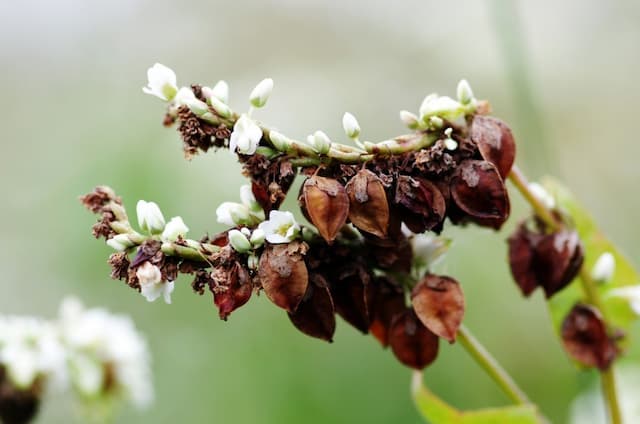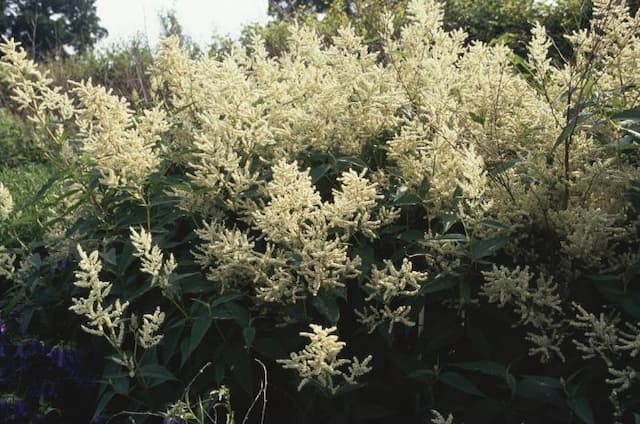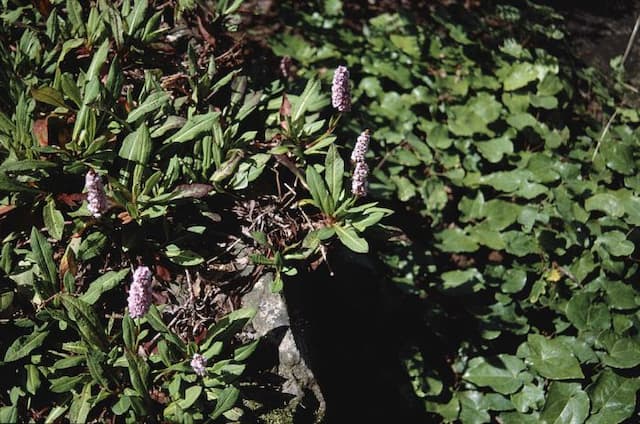Sorrel Rumex acetosa

ABOUT
The common name for Rumex acetosa is sorrel. This plant is recognized for its bright green, lance-shaped leaves that come to a pronounced point. The leaves are generally smooth with a glossy appearance and are arranged in a rosette at the base of the plant. The edges of the leaves have a slightly wavy appearance, giving them a distinctive look compared to other leafy greens. Sorrel produces small, reddish-green flowers that grow on a tall, erect stem in clusters. These flowers are not particularly showy but can add a touch of color to the green foliage. As the plant matures, the flowers give way to small, hard fruits that contain the seeds. The entire plant has a somewhat slender and airy appearance, with the foliage growing in a clumping habit. It's also worth mentioning that sorrel is known for its tangy, sour taste, which is due to the presence of oxalic acid in the leaves. The taste is often likened to that of lemon or sour wild greens, making it a unique addition to culinary dishes.
About this plant
 Names
NamesFamily
Polygonaceae.
Synonyms
Common Sorrel, Garden Sorrel, English Sorrel, Spinach Dock, Sour Dock, Narrow-Leaved Dock.
Common names
Acetosa angiocarpa, Acetosa hastulata, Acetosa pratensis, Lapathum acetosa, Rumex alpestris, Rumex anceps, Rumex angiocarpus, Rumex biformis, Rumex conglomeratus, Rumex cordatus, Rumex digynus, Rumex hastatus, Rumex hastulatus, Rumex intermedius, Rumex lanceolatus, Rumex lativalvis, Rumex longifolius, Rumex lunaria, Rumex nemorosus, Rumex patientia, Rumex puberulus, Rumex rugosus, Rumex scutatus, Rumex stenophyllus, Rumex subalpinus, Rumex sylvestris, Rumex undulatus, Rumex viridis, Rumex wrightii.
 Toxicity
ToxicityTo humans
Sorrel generally contains oxalic acid and can be toxic if consumed in large quantities. The manifestation of its toxicity in humans usually involves irritation of the mouth, throat, and digestive tract, and in severe cases, it could potentially lead to kidney stones or kidney failure due to the oxalates binding with calcium in the body. People with pre-existing kidney conditions or those who are at risk of developing kidney stones are advised to avoid consuming large amounts of sorrel.
To pets
Sorrel contains oxalic acid, which can also be harmful to pets if consumed in significant amounts. Similar to its effects on humans, the ingestion of sorrel by pets may cause vomiting, diarrhea, or lethargy due to gastrointestinal upset. In more severe cases, it might lead to kidney damage or the formation of calcium oxalate crystals, which can result in kidney stones. It is particularly dangerous to animals with a predisposition to kidney problems. Pet owners should ensure their pets do not consume large quantities of sorrel.
 Characteristics
CharacteristicsLife cycle
Perennials
Foliage type
Deciduous
Color of leaves
Green
Flower color
Red
Height
2 feet (0.61 meters)
Spread
1 foot (0.30 meters)
Plant type
Herb
Hardiness zones
3
Native area
Europe
Benefits
 General Benefits
General Benefits- Edible Uses: Rumex acetosa, commonly known as sorrel, is a leafy green that can be used in salads, soups, and sauces for its tart, lemony flavor.
- Nutritional Value: Sorrel contains vitamins such as Vitamin C, Vitamin A, and some B vitamins, along with minerals like potassium and magnesium.
- Culinary Versatility: It can be used in a variety of dishes, ranging from raw in salads to pureed in sauces and soups.
- Garden Diversity: Sorrel can act as a perennial plant in gardens, providing leafy greens for several years and adding diversity to the garden ecosystem.
- Soil Improvement: Being a perennial herb, sorrel can help in maintaining soil structure and health due to its deep rooting system.
- Attracts Beneficial Insects: Sorrel flowers can attract beneficial insects such as pollinators to the garden, aiding in the pollination of other plants.
- Cultural Significance: Sorrel has been used in traditional cuisine around the world, with a long history of culinary use in Europe and Asia.
- Low Maintenance: It is relatively easy to grow and does not require extensive care, making it suitable for gardeners of all skill levels.
 Medical Properties
Medical Properties- Vitamin C Source: Rumex acetosa, commonly known as sorrel, is rich in vitamin C and has been used to prevent scurvy.
- Digestive Aid: Sorrel has been traditionally used to aid digestion and promote gastrointestinal health.
- Anti-Inflammatory: Contains compounds that have anti-inflammatory properties, which may help in reducing inflammation.
- Diuretic Effects: It is known to have diuretic effects and has been used to increase urine production.
- Antioxidant Properties: Sorrel contains antioxidants which can help neutralize free radicals and may support overall health.
 Air-purifying Qualities
Air-purifying QualitiesThis plant is not specifically known for air purifying qualities.
 Other Uses
Other Uses- Rumex acetosa, commonly known as sorrel, can be used as a natural dye; its leaves contain tannins and oxalic acid which can produce shades of green or brown on fabrics when used as a dye.
- In gardens, sorrel may be grown as a companion plant to help repel certain pests due to its strong scent and presence of oxalic acid.
- Sorrel leaves have historically been used to polish chrome and copper due to their acidic nature, effectively removing tarnish and restoring shine.
- The plant's juice can be applied to the surfaces of iron tools to protect them from rust as the oxalic acid forms a protective, anti-corrosive layer.
- Young sorrel leaves are used as a decorative and flavorful garnish for various dishes, due to their vibrant color and tangy, lemony taste.
- As a soil indicator, the presence of sorrel often indicates that the soil is acidic and may need liming if not suitable for other plantings.
- Due to its acid content, sorrel can be used as a natural cleaning agent for limescale and other mineral deposits in kitchens and bathrooms.
- The fibers from sorrel stalks can be used in paper-making, providing an organic texture and uniqueness to handmade papers.
- When included in compost, sorrel leaves can increase the decomposition rate by introducing more organic acids that break down organic matter quickly.
- In the leather industry, the tannins present in sorrel can be utilized in the tanning process to help produce high-quality leather goods.
Interesting Facts
 Feng Shui
Feng ShuiSorrel is not used in Feng Shui practice.
 Zodiac Sign Compitability
Zodiac Sign CompitabilitySorrel is not used in astrology practice.
 Plant Symbolism
Plant Symbolism- Purification: Rumex acetosa, commonly known as Sorrel, has been historically used in various cultures to cleanse and purify the body due to its detoxifying properties.
- Protection: Sorrel is also believed to protect against negative energy and illness, which is why it was often included in herbal amulets and spell works.
- Wisdom: The sharp, tangy flavor of Sorrel is associated with mental clarity and insight, symbolizing wisdom and a clear mind.
- Vitality: The high vitamin C content and the bright green color of the plant are emblematic of health and vitality, suggesting the rejuvenation of spirit and body.
- Affection: In some folk traditions, Sorrel is given as a symbol of deep affection and love, possibly due to its heart-shaped leaves.
 Water
WaterFor the common sorrel, Rumex acetosa, watering should be done moderately. It is essential to keep the soil consistently moist but not waterlogged. Water the plant with approximately one gallon of water per week, making adjustments based on rainfall and temperature conditions. During hot and dry periods, it may be necessary to water the sorrel twice a week, while in cooler or wetter weather, less frequent watering is required. Always check the soil moisture at about an inch below the surface; if it feels dry, it's time to water.
 Light
LightThe best light conditions for common sorrel, Rumex acetosa, is full sun to partial shade. The ideal spot for planting sorrel would be in an area that receives at least 5 to 6 hours of sunlight daily. The plant is adaptable and can also tolerate light shade, which might be beneficial in very hot climates to protect it from the intense afternoon sun.
 Temperature
TemperatureCommon sorrel, Rumex acetosa, thrives best in temperatures between 60 to 75°F. It can survive minimum temperatures down to around 20°F and can tolerate maximum temperatures up to approximately 80°F. Temperature extremes outside of this range may impact the plant's health and growth. Constantly very high or low temperatures outside the tolerable range can be detrimental to sorrel.
 Pruning
PruningPruning common sorrel, Rumex acetosa, involves removing any yellowed or withered leaves to maintain plant health and appearance. It is also beneficial to cut back the plants after they flower to encourage new leaf growth. Pruning can be done as needed throughout the growing season. The best time to do significant pruning is in early spring or after the plant has flowered.
 Cleaning
CleaningAs needed
 Soil
SoilSorrel (Rumex acetosa) thrives in well-draining soil rich in organic matter with a pH range from 5.5 to 6.8. A mix containing garden soil, compost, and a bit of sand or perlite works well.
 Repotting
RepottingSorrel typically does not require frequent repotting and can thrive outdoors, but if grown in containers, consider repotting every 2-3 years to replenish nutrients.
 Humidity & Misting
Humidity & MistingSorrel is not particularly humidity-sensitive but prefers average to slightly higher humidity levels; it can generally tolerate the ambient outdoor humidity.
 Suitable locations
Suitable locationsIndoor
Ensure rich soil, partial sun, and regular watering for indoor Sorrel.
Outdoor
Plant Sorrel in a sunny spot with rich, well-draining soil.
Hardiness zone
3-9 USDA
 Life cycle
Life cycleThe common sorrel (Rumex acetosa) starts its life cycle when seeds germinate in the spring, requiring light and a suitable temperature. The seedlings develop into rosettes of long, arrow-shaped leaves at the ground level. As the plant matures, it sends up a flower stalk and blooms in early to late summer, producing small reddish-green flowers that are typically pollinated by wind. After pollination, the flowers develop into hard, reddish-brown triangular seeds that are dispersed by wind or fall close to the parent plant. The plant is a perennial, so it dies back to the root system in winter and regrows from these roots the following spring. Throughout its life cycle, sorrel can also spread vegetatively through its extensive root system.
 Propogation
PropogationPropogation time
Spring to summer
Propogation: Common sorrel (Rumex acetosa) is a perennial herb widely propagated by seeds. The best time to sow the seeds is in spring after the last frost, as sorrel seeds require some warmth to germinate effectively. To propagate, select a well-draining spot in the garden and sow the seeds directly into the soil, covering them lightly with a fine layer of earth. Keep the soil consistently moist until germination, which typically occurs within a week or two. Once the seedlings are established, thin them to about 6 to 8 inches apart to allow for ample growth. The process is straightforward, as sorrel seeds are generally reliable in producing new plants, and the effort is minimal compared to other forms of propagation such as division or cuttings.




![Red bistort [JS Seven Oaks Village]](/_next/image?url=https%3A%2F%2Fplants-admin.emdemapps.com%2Fimages%2Fplants%2F%2Fimages%2F604b56557c0e3.png&w=640&q=75)




